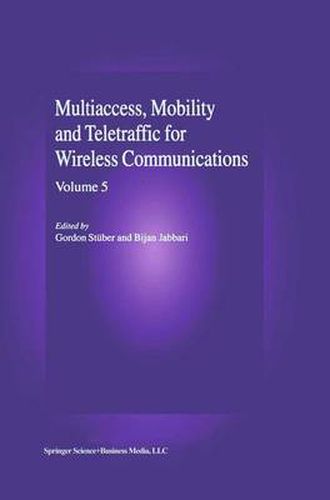Readings Newsletter
Become a Readings Member to make your shopping experience even easier.
Sign in or sign up for free!
You’re not far away from qualifying for FREE standard shipping within Australia
You’ve qualified for FREE standard shipping within Australia
The cart is loading…






This title is printed to order. This book may have been self-published. If so, we cannot guarantee the quality of the content. In the main most books will have gone through the editing process however some may not. We therefore suggest that you be aware of this before ordering this book. If in doubt check either the author or publisher’s details as we are unable to accept any returns unless they are faulty. Please contact us if you have any questions.
The convergence of wireless communication and the Internet is one of the strongest emerging markets in the telecommunications industry. This book consists of a compilation of papers on issues related to 3G and 4G wireless communications and wireless access to next generation Internet (NGI). Included in this volume are new results on space-time access schemes that can dramatically increase the achievable bit rates of wireless systems, perhaps approaching bandwidth efficiencies in the order of 10 bits/s/Hz. The book also considers broadband wireless access to NGI. Effective management of radio resources in wireless systems is necessary for high spectral efficiency and to support mobility. This book treats issues relating to handoff and channel assignment in cellular frequency reuse systems. In order to achieve quality of service (QoS) expectations in a dynamically changing wireless environment, effective error and QoS control protocols are needed. To guarantee fairness in the access to resources, medium access control (MAC) protocols are needed. Optimization of network resources traffic and mobility models are also needed, along with effective call admission control strategies. All of these topics are covered herein. Finally, this book considers future 3G and 4G wireless systems and highlights the critical challenges that must be overcome to make these systems a commercial reality.
$9.00 standard shipping within Australia
FREE standard shipping within Australia for orders over $100.00
Express & International shipping calculated at checkout
This title is printed to order. This book may have been self-published. If so, we cannot guarantee the quality of the content. In the main most books will have gone through the editing process however some may not. We therefore suggest that you be aware of this before ordering this book. If in doubt check either the author or publisher’s details as we are unable to accept any returns unless they are faulty. Please contact us if you have any questions.
The convergence of wireless communication and the Internet is one of the strongest emerging markets in the telecommunications industry. This book consists of a compilation of papers on issues related to 3G and 4G wireless communications and wireless access to next generation Internet (NGI). Included in this volume are new results on space-time access schemes that can dramatically increase the achievable bit rates of wireless systems, perhaps approaching bandwidth efficiencies in the order of 10 bits/s/Hz. The book also considers broadband wireless access to NGI. Effective management of radio resources in wireless systems is necessary for high spectral efficiency and to support mobility. This book treats issues relating to handoff and channel assignment in cellular frequency reuse systems. In order to achieve quality of service (QoS) expectations in a dynamically changing wireless environment, effective error and QoS control protocols are needed. To guarantee fairness in the access to resources, medium access control (MAC) protocols are needed. Optimization of network resources traffic and mobility models are also needed, along with effective call admission control strategies. All of these topics are covered herein. Finally, this book considers future 3G and 4G wireless systems and highlights the critical challenges that must be overcome to make these systems a commercial reality.